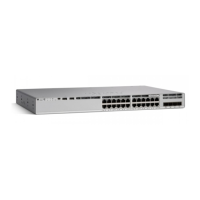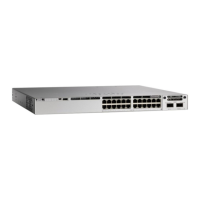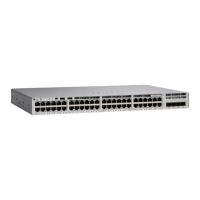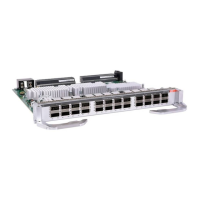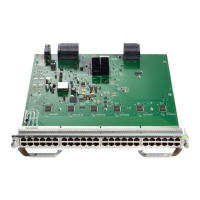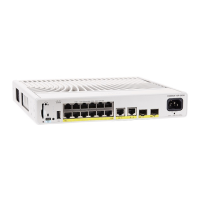Based on the community, you can control which routing information to accept, prefer, or distribute to other
neighbors. A BGP speaker can set, append, or modify the community of a route when learning, advertising,
or redistributing routes. When routes are aggregated, the resulting aggregate has a COMMUNITIES attribute
that contains all communities from all the initial routes.
You can use community lists to create groups of communities to use in a match clause of a route map. As
with an access list, a series of community lists can be created. Statements are checked until a match is found.
As soon as one statement is satisfied, the test is concluded.
To set the COMMUNITIES attribute and match clauses based on communities, see the match community-list
and set community route-map configuration commands in the “Using Route Maps to Redistribute Routing
Information” section.
BGP Neighbors and Peer Groups
Often many BGP neighbors are configured with the same update policies (that is, the same outbound route
maps, distribute lists, filter lists, update source, and so on). Neighbors with the same update policies can be
grouped into peer groups to simplify configuration and to make updating more efficient. When you have
configured many peers, we recommend this approach.
To configure a BGP peer group, you create the peer group, assign options to the peer group, and add neighbors
as peer group members. You configure the peer group by using the neighbor router configuration commands.
By default, peer group members inherit all the configuration options of the peer group, including the remote-as
(if configured), version, update-source, out-route-map, out-filter-list, out-dist-list,
minimum-advertisement-interval, and next-hop-self. All peer group members also inherit changes made to
the peer group. Members can also be configured to override the options that do not affect outbound updates.
Aggregate Routes
Classless interdomain routing (CIDR) enables you to create aggregate routes (or supernets) to minimize the
size of routing tables. You can configure aggregate routes in BGP either by redistributing an aggregate route
into BGP or by creating an aggregate entry in the BGP routing table. An aggregate address is added to the
BGP table when there is at least one more specific entry in the BGP table.
Routing Domain Confederations
One way to reduce the IBGP mesh is to divide an autonomous system into multiple subautonomous systems
and to group them into a single confederation that appears as a single autonomous system. Each autonomous
system is fully meshed within itself and has a few connections to other autonomous systems in the same
confederation. Even though the peers in different autonomous systems have EBGP sessions, they exchange
routing information as if they were IBGP peers. Specifically, the next hop, MED, and local preference
information is preserved. You can then use a single IGP for all of the autonomous systems.
BGP Route Reflectors
BGP requires that all of the IBGP speakers be fully meshed. When a router receives a route from an external
neighbor, it must advertise it to all internal neighbors. To prevent a routing information loop, all IBPG speakers
must be connected. The internal neighbors do not send routes learned from internal neighbors to other internal
neighbors.
Routing Configuration Guide, Cisco IOS XE Everest 16.6.x (Catalyst 9500 Switches)
121
Configuring IP Unicast Routing
BGP Neighbors and Peer Groups
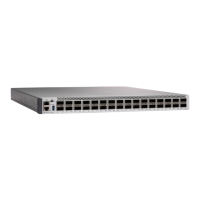
